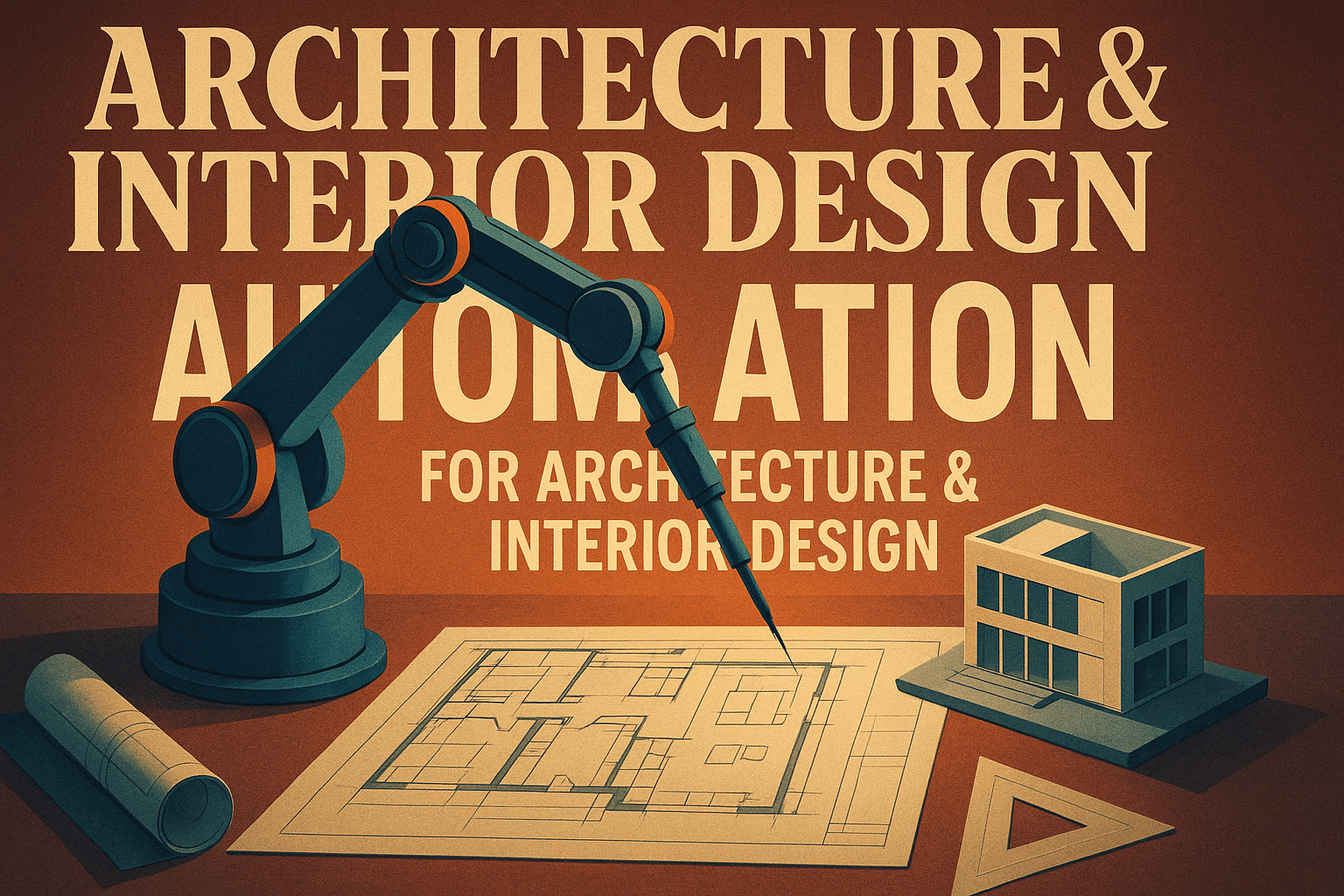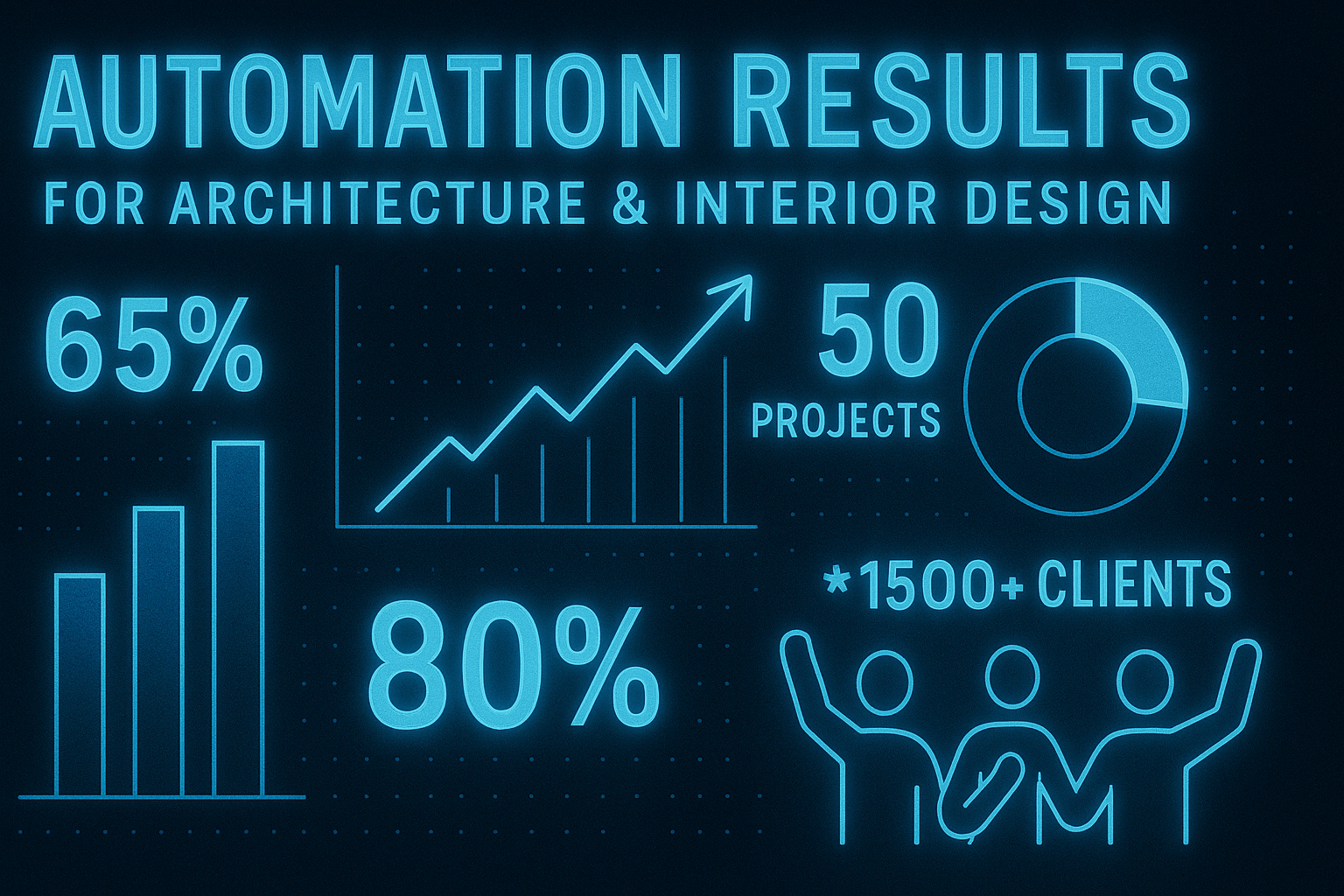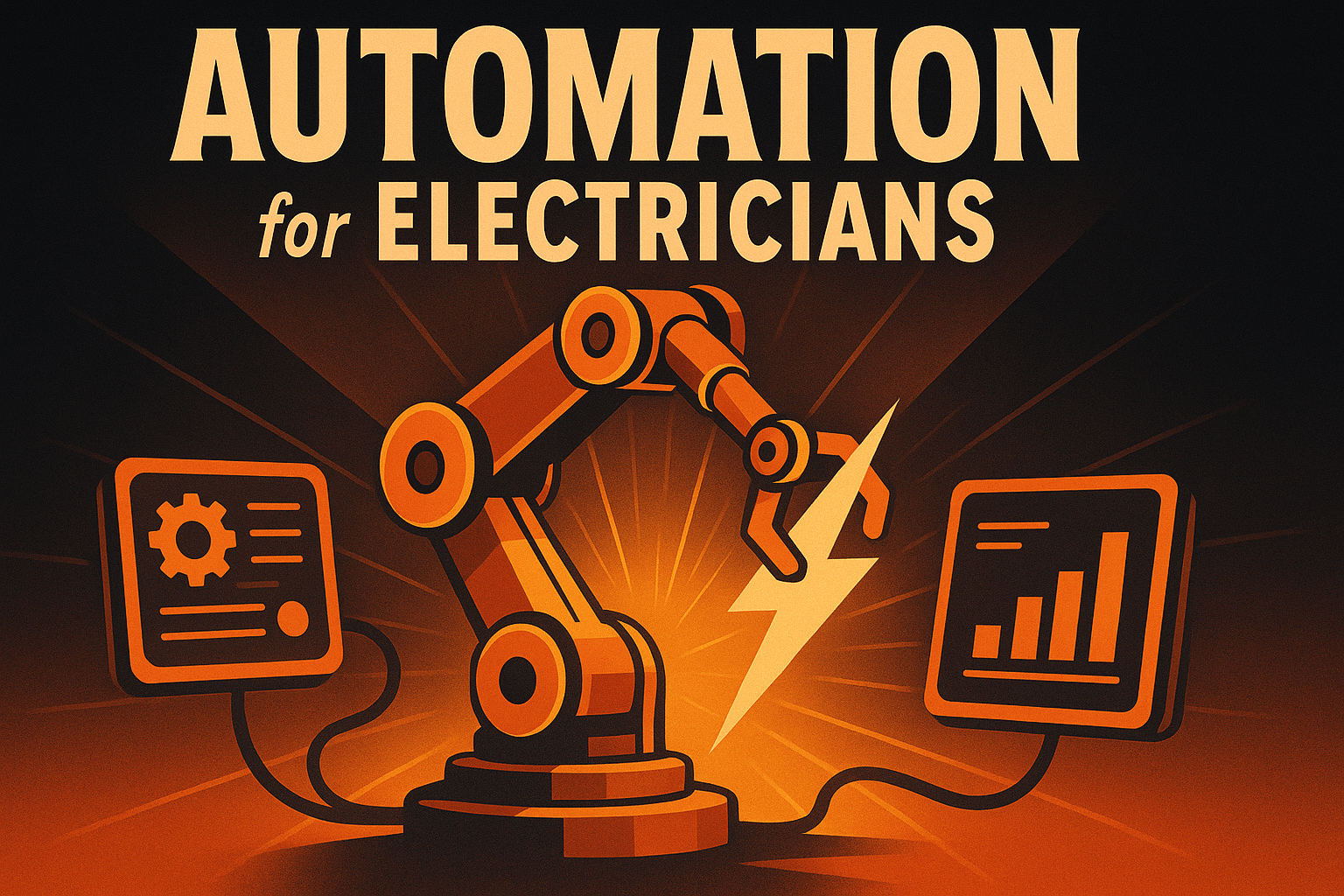A Simple System for Automation in Architecture & Interior Design
by Design Delulu Editorial · September 30, 2025

Smart, fast, and measurable automation strategies that help architecture and interior design firms scale client acquisition, streamline operations, and drive predictable revenue growth.
Why Automation Matters for Architecture & Interior Design Firms
Architecture and interior design firms face a unique challenge: every project demands creativity, precision, and deep client relationships—yet administrative tasks, manual follow-ups, and disconnected systems consume hours that could be spent designing or closing deals. When your team is juggling client consultations, vendor coordination, project timelines, and proposal generation, inefficiencies compound quickly. The result? Missed opportunities, inconsistent client experiences, and revenue that plateaus despite your talent and reputation. Automation isn't about replacing the human touch that defines exceptional design work—it's about eliminating friction so your team can focus on what actually drives value.
The firms winning today aren't just talented designers; they're operationally efficient. They use automation to capture leads instantly, nurture prospects with personalized sequences, deliver proposals in minutes instead of days, and track every interaction from initial inquiry to final invoice. This operational edge translates directly to competitive advantage: faster response times win more projects, consistent follow-up maximizes conversion rates, and data-driven insights reveal which marketing channels and client segments generate the highest ROI. When you automate the repeatable tasks that bog down your pipeline, you don't just save time—you create a scalable system that grows revenue without proportionally growing headcount or overhead.

Core Automation Strategies for Design Firms
Effective automation for architecture and interior design firms starts with understanding where manual processes create the most friction and opportunity cost. The goal is to build an integrated system that captures demand, qualifies leads, nurtures relationships, and streamlines project delivery—all while maintaining the premium, personalized experience your clients expect.
Lead Capture & Client Intake Automation
Your website should work as a 24/7 lead generation engine. Implement smart forms that automatically segment inquiries by project type, budget range, and timeline. When a prospect submits a consultation request, trigger instant confirmation emails with next steps, automatically create CRM records with complete contact history, and route high-value leads to the right team member based on specialization or capacity. For architecture firms, this might mean separate workflows for residential renovations versus commercial builds. For interior designers, segment by service tier—full-service design, e-design, or consultation-only. The result: zero leads fall through cracks, response times drop from hours to minutes, and your team always knows who to follow up with and when.
Proposal & Contract Automation
Manual proposal creation is one of the biggest time sinks for design firms. Build templated proposal systems that auto-populate client details, project scope, deliverables, timelines, and pricing based on your service packages. Use tools that allow prospects to review, approve, and e-sign contracts without printing, scanning, or scheduling in-person meetings. Include automated payment collection so retainers are captured immediately upon signature. This reduces your sales cycle by days or weeks, improves cash flow, and creates a professional, friction-free buying experience that premium clients expect. Track proposal open rates, time-to-decision, and conversion rates to identify bottlenecks and optimize your sales process continuously.
Client Communication & Project Management Workflows
Once a project kicks off, communication complexity multiplies. Automate status updates at key milestones—design concept approval, procurement orders placed, installation scheduled. Set up client portals where they can view progress, approve selections, and submit feedback without endless email threads. Use workflow automation to assign tasks, send reminders, and escalate overdue items. For architecture firms managing contractors and permits, automate coordination workflows that notify relevant parties when dependencies complete. For interior designers juggling vendors and custom fabrication, automate order tracking and delivery scheduling. This keeps projects on track, reduces client anxiety, and frees your team from repetitive status check-ins.
Marketing Automation & Lead Nurturing
Not every prospect is ready to commit immediately, but staying top-of-mind is critical in a long sales cycle. Build email nurture sequences that deliver value over time—portfolio showcases, design trend insights, client testimonials, and process explainers. Segment by lead source, project type, or engagement level so messaging feels personalized, not generic. Use behavioral triggers: if someone downloads your pricing guide, follow up with case studies in that budget range. If they browse your residential portfolio, send renovation-specific content. Track email opens, click-through rates, and conversion to consultation to understand which content moves prospects through your funnel. Pair this with retargeting ads to stay visible across platforms without manual campaign management.

Analytics & Performance Tracking
Automation without measurement is just activity. The real power comes from tracking what drives results. Implement comprehensive analytics that connect marketing spend to closed projects. Set up event tracking in GA4 to monitor form submissions, proposal downloads, phone clicks, and booking conversions. Build server-side tagging to ensure accurate data even as privacy regulations tighten. Create unified dashboards in Looker Studio that show lead volume by source, conversion rates by stage, average project value, and cost per acquisition. Use attribution modeling to understand which touchpoints—SEO, paid social, referrals, email—deserve credit for conversions. This visibility transforms decision-making: you'll know exactly which channels to scale, which content to produce more of, and where your marketing budget generates the highest ROI.
Essential KPIs for Design Firm Automation
Track metrics that directly tie to revenue growth. Lead response time should be under 5 minutes for web inquiries. Consultation booking rate (inquiries to scheduled meetings) reveals qualification and follow-up effectiveness. Proposal-to-close rate shows whether your pricing, scope, and sales process align with market expectations. Average sales cycle length identifies friction points—if proposals sit unsigned for weeks, your contract process needs optimization. Customer acquisition cost (CAC) by channel shows where to invest more aggressively. Client lifetime value (LTV) reveals which project types and client segments are most profitable long-term. Review these metrics weekly in team meetings and quarterly for strategic planning. When everyone operates from a single source of truth, your entire team optimizes toward the same goals.
Implementation Roadmap
Most architecture and interior design firms see meaningful results within 4-8 weeks of launching automation. Here's the proven path:
Phase 1: Discovery & Goals (Week 1)
Audit your current process from lead capture to project close. Identify the highest-friction points—where do prospects drop off? Where does your team spend the most manual time? What data do you wish you had but don't? Define success metrics tied to business outcomes: increase consultation booking rate by 30%, reduce proposal creation time by 50%, improve lead-to-client conversion by 20%. Document your existing tech stack (CRM, project management, accounting) to ensure new automation integrates seamlessly.
Phase 2: Blueprint & Architecture (Week 2-3)
Design the automation workflows that will deliver your goals. Map out lead capture forms, CRM field structure, email sequences, proposal templates, and dashboard metrics. Create a measurement plan that specifies what events to track, how attribution will work, and which reports stakeholders need. Build consensus across your team—operations, sales, design—so everyone understands how the system works and what changes for them. Document processes clearly so training and onboarding are straightforward.
Phase 3: Build & Launch (Week 4-6)
Implement the automation infrastructure. Configure CRM workflows, build email sequences, set up proposal software, install tracking pixels, and create dashboards. Run QA across every workflow—test form submissions, trigger sequences, check data accuracy, and verify integrations. Launch incrementally: start with lead capture and nurture, then layer in proposals, then analytics. Monitor closely for the first two weeks post-launch to catch edge cases and optimize based on real user behavior.
Phase 4: Optimize & Scale (Week 7-8 and Ongoing)
Review performance data weekly. Which email sequences drive the most bookings? Which lead sources convert best? Where do prospects stall in your funnel? Iterate ruthlessly—tweak subject lines, adjust follow-up timing, refine qualification questions, and simplify proposal language. Double down on what works: if one project type has a 50% close rate, create dedicated landing pages and campaigns for that segment. Automation compounds—small improvements in each stage multiply across your entire pipeline, creating exponential growth over time.

Best Practices for Sustainable Automation
Successful automation isn't set-it-and-forget-it. The firms that compound wins over time follow these principles:
Prioritize Highest-Impact Workflows First
Don't try to automate everything at once. Start with the one or two processes that consume the most time or lose the most revenue. For most design firms, that's lead follow-up and proposal generation. Get those running smoothly, measure the impact, then expand to project management, invoicing, or client onboarding. Sequential implementation reduces overwhelm, builds team confidence, and delivers quick wins that fund further investment.
Pair Creative with Measurement
Every piece of content—portfolio page, blog post, email, ad—should have a KPI attached. If you're publishing project case studies, track which ones drive the most consultation bookings. If you're running Instagram ads, measure cost per lead and lead-to-client conversion, not just vanity metrics like impressions. This accountability ensures your creative and marketing efforts drive business results, not just engagement.
Use Templates and Systems to Scale
Build once, use repeatedly. Create proposal templates for each service tier so new proposals take 10 minutes instead of two hours. Develop email sequence templates for different client types—residential, commercial, e-design—so you're not writing from scratch each time. Document workflows in a shared playbook so any team member can execute consistently. This systematization is what allows you to scale revenue without proportionally scaling headcount.
Close the Loop with Regular Reviews
Schedule weekly pipeline reviews where the team examines key metrics, discusses bottlenecks, and commits to specific optimizations. Conduct quarterly strategic resets where you evaluate channel performance, update forecasts, and reallocate budget to highest-ROI activities. Continuous improvement compounds—a 5% monthly lift in conversion rates means 80% annual growth. The firms that build review rhythms into their culture are the ones that dominate their markets over time.
Industry-Specific Strategies for Architecture & Interior Design
Design firms have unique buying cycles, client expectations, and competitive dynamics. Tailor your automation accordingly:
Map Search Intent to Buyer Stages
Architecture and interior design buyers typically move through four stages: inspiration (browsing portfolios, gathering ideas), education (understanding process, timeline, budget), evaluation (comparing firms, reading reviews), and decision (requesting proposals, booking consultations). Map your content and automation to these stages. Inspiration-stage visitors need visual portfolios and style guides. Education-stage prospects want process explainers and FAQ pages. Evaluation-stage leads need testimonials, case studies, and pricing transparency. Decision-stage contacts should see immediate consultation booking options and clear next steps. Use progressive profiling in your CRM to track where each lead sits and deliver stage-appropriate messaging.
Use Social Proof and Outcomes Early
Trust is critical in high-ticket design services. Automate social proof delivery throughout the buyer journey. Include client testimonials and before/after photos on landing pages. Trigger automated email sequences that showcase relevant case studies based on the prospect's project type. Display trust badges, awards, and certifications prominently. For high-value leads, automate personalized video messages from principals or lead designers. The earlier you establish credibility, the faster prospects move to proposal and the higher your close rates climb.
Measure Against a Single Source of Truth
Design firms often have fragmented data—lead info in one system, project details in another, financials in a third. Build integrations so all data flows into a unified dashboard. When your CRM, project management tool, and accounting software talk to each other, you can track true customer lifetime value, identify which lead sources produce the most profitable projects, and forecast revenue accurately. A single source of truth eliminates guesswork and aligns every team member around the same metrics.
Ship Small, Test Fast, Compound Wins
The design industry evolves quickly—trends shift, competitors launch new services, buyer behavior changes. Build a culture of rapid experimentation. Test new email subject lines, landing page layouts, ad creative, and offer structures every week. Use A/B testing to let data guide decisions, not opinions. When you find something that works—a 40% open rate email or a landing page with 15% conversion—systematize it immediately and build more around that winning formula. Small, validated wins compound into outsized competitive advantages over 6-12 months.
Common Challenges and Solutions
Challenge: Automation Feels Impersonal
Solution: Use personalization tokens, segment by project type and budget, and include human touchpoints at key moments. Automation handles routine tasks; your team focuses on high-value consultations and design work. The result is actually more personalized because prospects get relevant content, not generic broadcasts.
Challenge: Our Tech Stack Is Fragmented
Solution: Start with integrations between your top three tools (usually CRM, email, and project management). Use middleware like Zapier or Make to connect systems without custom development. Over time, consolidate onto platforms with native integrations. The goal isn't perfection on day one—it's incremental improvement that compounds.
Challenge: We Don't Have Time to Build This
Solution: That's exactly why automation is critical. The time you invest upfront (typically 20-40 hours across 4-8 weeks) saves hundreds of hours annually in manual work. Partner with specialists who know design firm workflows and can implement proven systems quickly. The ROI typically appears within the first quarter post-launch.
Frequently Asked Questions
Let’s level up your Architecture & Interior Design business
Need services that actually move the needle for Architecture & Interior Design? See our approach, pricing, and timelines—then book a quick call.
Additional Resources
- Schedule a Strategy Call
Book a 30-minute consultation to discuss your current processes, growth goals, and how custom automation can transform your firm's efficiency and revenue.
- View Design Firm Success Stories
See real automation projects and results from architecture and interior design firms we've helped scale—complete with metrics, timelines, and before/after workflows.
- Access Free Automation Tools & Templates
Download ready-to-use automation templates, workflow blueprints, and KPI dashboards designed specifically for architecture and interior design businesses.
Related Reading

Discover how automation for electricians streamlines scheduling, invoicing, lead tracking, and customer follow-ups to boost revenue and efficiency. Get started today.

Discover how automation streamlines furniture & home decor operations with GA4 tracking, attribution modeling, and data-driven dashboards. Get your 90-day implementation roadmap.
